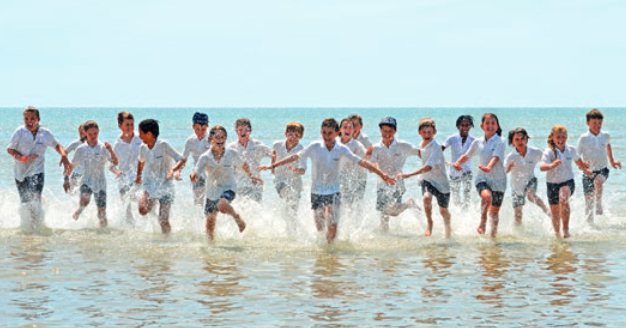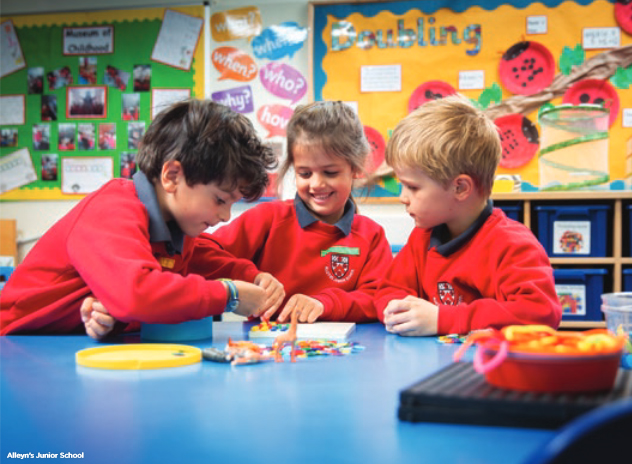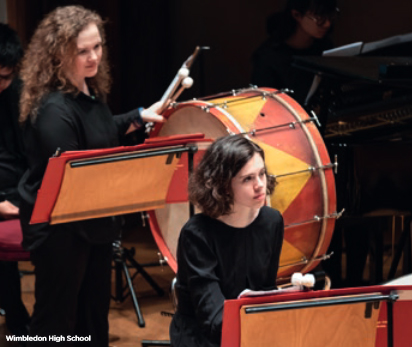Menu

Single-sex vs co-ed, state or private, day or boarding? Nicola Woolcock, Education Correspondent of The Times, unpicks the educational choices facing every parent.
The vitality of independent schools increasingly depends on their location and what they offer to set themselves apart. No longer can a school assume that parents will beat a path to its door, ready to hand over a considerable part of their income.
Fees continue to rise above inflation, state school standards continue to rise and private schools continue to come under pressure to justify their charitable status and provide means-tested bursaries, rather than scholarships not dependent on income.
But despite this, the popularity of private schools in London and the South East shows no sign of abating. The latest Independent Schools Council (ISC) census has a map revealing the geographical breakdown of fee-charging schools across the UK – pupil density is highest in south-west London (Wandsworth, Richmond and Kingston-upon-Thames among others), plus a couple of other hotspots outside the capital.
While London schools are buoyed up by high salaries and affluent foreign families, this should not engender complacency. Plenty of schools in other parts of the country are struggling, have gone co-educational or have closed or merged with neighbours, and house prices are stagnant or even falling in some London boroughs.

Single-sex vs co-educational
Single-sex schools have experienced a long but very slow decline over the last few decades.
They give multiple reasons for this: many former girls’ or boys’ schools that have gone co-ed have justified it on educational or social grounds, saying there is growing awareness of the benefit to boys of having girls around. Tempers have frayed among heads defending their support for single-sex or mixed education.
Richard Cairns at Brighton College, has questioned the ongoing need for girls’ or boys’ schools, as the sexes will mix in their professional lives – schools should mirror this, he says, and girls need to learn to socialise with boys in the classroom. He claimed it was “breathtakingly patronising” to suggest that girls clammed up in front of boys.
However Jane Lunnon, Head of Wimbledon High School, has referenced the ‘#MeToo’ movement and the centenary of the suffragette movement in her defence of the sector. In response to Mr Cairns’ comments she said: “Less than 100 years ago, women and girls in this country were being dismissed with such casual sexism, and were having to fight so hard not to be patronised,” adding that prejudiced thinking was pervasive, insidious and dangerous. “Of course, girls don’t need boys to be confident, articulate, engaging and compelling in social situations or in class,” she said.
Whether because of financial or societal pressures, some formerly single-sex schools have opened their doors to the opposite sex in recent years. Oona Carlin, a head who opened up her girls’ school in Ipswich to boys in 2017 spoke of “moving with the times”.
However, she had adopted the so-called diamond model, where children are educated together in the primary years, separated from 11-16 and are taught together again in sixth form. It is a system used by at least a dozen schools, including The Royal School, Haslemere, which partially segregates from the age of seven and fully from 11-16.
While nationally schools are increasingly going co-ed, some of the biggest names in single-sex education are in London and the home counties.
It is unlikely that City of London, Roedean, North London Collegiate School, Wycombe Abbey, Dulwich College or King’s College School in Wimbledon will go mixed at any stage beyond the sixth form – although the boys-only St Paul’s School was reported earlier this year to be considering taking girls.
Single-sex state schools have also seen numbers decrease but hundreds remain and others have even opened. They include The Fulham Boys School, a free school that opened in 2014. Burntwood School in Wandsworth is also resolutely single-sex; its mission statement is “the best education today for the women of tomorrow”. Others in the south-west London area for girls include Streatham & Clapham High School, Sydenham High School and Sutton High School, all members of the Girls’ Day School Trust.
Some experts insist that girls and boys flourish without the other sex around as a distraction or intimidation and that it also allows the school to tailor teaching styles and the curriculum. Others disagree.
“Boys’ schools are able to develop their own resources, choose their teachers, and design their curriculums with only one goal in mind, to meet the educational and developmental needs of young men,” says Sarah Segrave, Head of Eaton House The Manor Prep and Director of Education at Eaton House Schools.
Parents – who know their children best – will be able to gauge whether or not a single-sex environment will suit their offspring’s personality.

State vs private
The state vs private debate has moved in recent years from the quality of teaching to the exceptional extracurricular activities.
Many of the big name independent schools are highly academically selective, catering for children who are intellectual and can hold their own in the classroom. However, many state schools – particularly in London – also have very high standards and impressive GCSE and A level results. Partly this was triggered by the London Challenge, which began in 2003 to transform results across the capital’s secondary schools.
Other state schools have long had gilded reputations, including Grey Coat Hospital School in Westminster, where Michael Gove sent his daughter, Holland Park School in west London and The London Oratory School in Fulham.
Add to this the numerous grammar schools on the fringes of the capital, in Barnet, Kent and Sutton, and the picture for parents choosing the state school route is far from bleak in many areas. Several highly academic state sixth form schools have opened in recent years, including King’s Maths School, set up in partnership with King’s College London, and Newham Collegiate Sixth Form Centre, where 95 per cent of leavers had an offer to study at a Russell Group university last year.
So why are many families still fighting to get their children into private schools – and paying handsomely for the privilege? While the average boarding fee is £34,700pa nationally, it is £40,000 in London. Day fees are £14,000 nationally and £17,300 in the capital – a hefty investment for most families, particularly those with two or more children.
One reason is the outstanding exam results at many independent schools. Another is the more personalised attention – class sizes tend to be smaller as does the average school size (505 pupils at a senior school compared with about 950 in a state secondary).
But it is the quality and breadth of the arts, music and sports on offer that really swings it for some families. Many state schools are struggling with squeezed budgets and curriculums that are ever more focused on core subjects, while private schools, according to this year’s ISC census, boast hundreds of dance studios, swimming pools, concert halls and tennis courts. Pupils are exposed to illustrious speakers, and societies for debating, rocketry, robotics or dissection.
Barnaby Lenon, the former head of Harrow and Chairman of the ISC, said: “Independent schools continue to offer forms of education which are thin on the ground in the state sector, such as single-sex schools, boarding, special needs schools and those with an emphasis on music and dance or cathedral choirs.”

Day vs boarding
British boarding is world renowned, whether for good or bad. Most boarding schools are keen to boast that they are unrecognisable from the days of yore, when spartan dormitories, cold showers and regular beatings were accepted. Now many claim to offer study bedrooms, restaurant-standard meals, pastoral support and even pet dogs.
Boarding is more of an option today because of the more flexible arrangements. Increasing numbers of schools offer flexi-boarding, the chance to stay just one or two nights a week. Weekly or flexi-boarders now account for 18 per cent of all boarding pupils, up from 15.7 per cent two years ago.
Despite this, the cost over a day school can be prohibitive for parents. Day schools might not be spread over huge acreage but they can offer a good selection of co-curricular activities, and a cohort that is more likely o live close by so your children can build friendships while parents keep a watchful eye on homework and social activities.
It is nonetheless a dilemma when choosing between day and boarding. Are you happy to wave goodbye to your child each week? Does he or she have the personality to settle into boarding life and fully embrace the ethos of the school? For some families, the choice to board is one dictated by their lifestyle, such as if both parents regularly work late or travel abroad.
Heathfield School in Ascot is one of the few girls’ full-boarding schools. Unlike many others, it does not offer flexi-boarding but girls have at least seven weekend visits home each academic year, plus the option to take more, and the half-term holidays. It also started taking day pupils a few years ago. During weekends at school, activities include banana boating and skydiving.
Marina Gardiner Legge, the headmistress, deliberately inculcates resilience among pupils at the small school of just 180 pupils (about 70 per cent are boarders). She said that she strove to create a safe environment, but not so nurturing that girls were overwhelmed when they went to university or into the world of work – “they need to be happy, but not too happy”, she said, tongue-in-cheek.
She added that in terms of risk-taking, there was a balance to be struck between anxiety and boredom. Recent speakers, including polar explorer Rosie Stancer have been chosen to talk about their experiences of significant or public failure, and how they overcame that.
Parents considering boarding should look very carefully at the pastoral support and what it offers to those who are homesick or struggling. What sports, music and group activities are promoted? During visits, do pupils look happy? Crucially, is your child enthusiastic to give it a go and fully aware of the reality, rather than fuelled by a Harry Potter fantasy?
